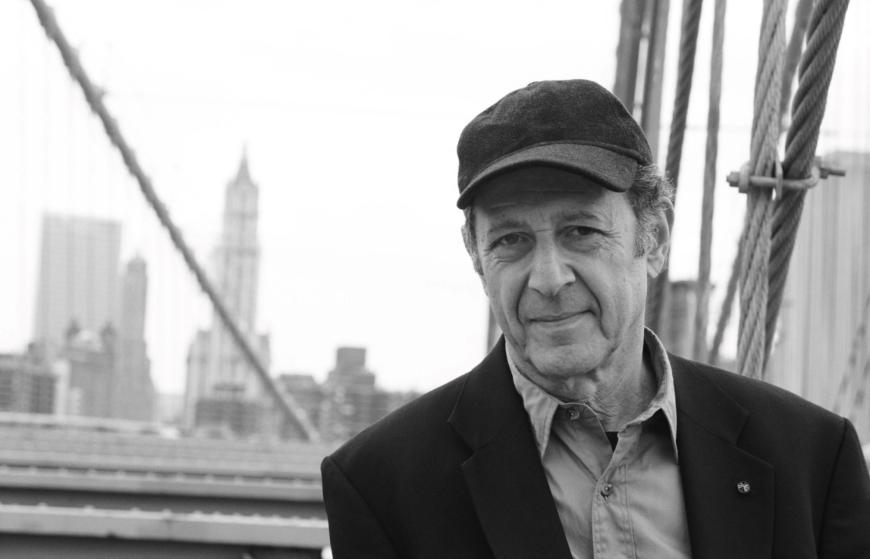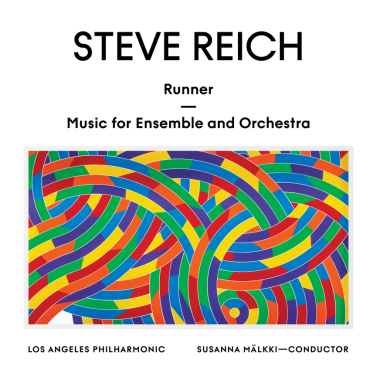
It’s catch-up time for fans of Steve Reich. Recordings of his latest compositions, delayed by the pandemic shutdown, are emerging from the vaults of Nonesuch Records, the label that has been documenting his works for nearly the last 40 years. Reich/Richter was released in June, and now Runner and Music for Ensemble and Orchestra are out, the latter two having been recorded by the Los Angeles Philharmonic under its adventurous principal guest conductor, Susanna Mälkki.
Actually, all three pieces could have fit on one CD — at half the cost for the consumer. But as we will see, Runner and Music for Ensemble and Orchestra do form a natural pair. You could even call them twins. Reich himself calls MFEAO “Runner II.”

Music for Ensemble and Orchestra was supposed to have been released in 2019 after the November 2018 world-premiere performances were recorded by the LA Phil, but there was no companion piece available, Runner having not received a commercial recording at the time. And then the pandemic shut everything down until Mälkki and the Phil could get around to scheduling and recording performances of Runner — which finally happened last November.
MFEAO amounts to a late-career breakthrough for Reich, who hadn’t written anything for an orchestra in about 30 years. When Reich’s music penetrated the mainstream in the 1980s, he started getting commissions from orchestras. Yet most of the time, his style seemed to be an uncomfortable fit with large groups, smoothing over his rhythmic sound world — and orchestras then were not well versed in the minimalist manner either. So he stopped and went back to writing for chamber groups. The key to his return was that, instead of approaching the orchestra from the outside in, Reich figured out how to approach it from the inside out — with a small group as the core and the larger orchestra filling in the spaces. Runner set the template for the small group, and MFEAO expanded the model into a concerto grosso.
For about a decade, Reich had been staying in a structural comfort zone, dividing his works in a strict three-part, fast-slow-fast sequence. But these two pieces revisit a five-part, palindromic pattern — fast going down to moderate speed, then slow, and then back up to moderate and fast — that Reich tried out in a modified, expanded form with The Desert Music back in 1984.
It is apparent now how remarkably similar the two pieces on this album are when heard one after another. The pacing, musical language, sudden modulations, continuous writing, and even the names of the movements are virtually the same. Instead of specific speeds, the movements in both works are labeled in note values — Sixteenths, Eighths, Quarters, Eighths, and Sixteenths in that order — while propelling forward at the same metronome marking throughout. The total timings are pretty close, with MFEAO clocking in at nearly 20 minutes, just over four minutes longer than Runner. Runner was written for The Royal Ballet of London, but MFEAO could be equally danceable.
Amid all of the constant activity, there is a feeling of reflective tranquility from the pairs of violins, violas, cellos, mallet instruments, flutes, oboes, clarinets, and pianos (plus double bass in Runner and electric and double basses in MFEAO) that fuel Runner’s engine and carry over into the larger forces of MFEAO. I hear traces of the Brandenburg Concertos in the opening movement of Runner, and MFEAO has a funky, jazzy stretch in its closing movement.
While MFEAO has more passages of lush unison beauty — given the larger ensemble, no wonder — both works, though far from the radical Reich of old, are engaging pieces that offer a small break from his recent past and attest to the composer’s vitality in his 80s. Mälkki and the quick-study LA Phil sound thoroughly at home in both.



